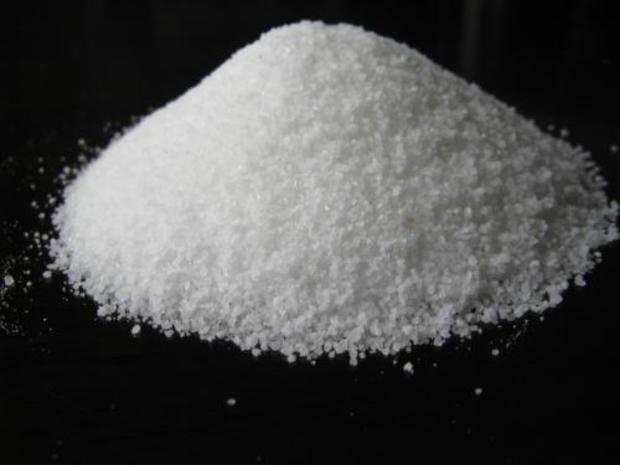Polyacrylamide: Overview
What is Polyacrylamide and its Various Uses
Chemical Properties of Polyacrylamide
Polyacrylamide is a water-soluble polymer formed from acrylamide monomer units. Each monomer unit contains a carbon-carbon double bond connected to a carbonyl group and an amino group. During the polymerization process, these monomer units link together through the carbon-carbon double bonds to form long chains or strands of linked monomer units. The resultant polymer contains repeating molecular units consisting of the acrylamide monomer.
Polyacrylamide has a flexibility and ability to take on different configurations due to the rotational freedom of the carbon-carbon and carbon-nitrogen single bonds along the polymer chain. However, the polymer is not as flexible as shorter chained polymers due to the increased intertwining and entanglement of chains that occurs as the molecular weight increases. Polyacrylamide typically appears as a white, odorless, hydrophilic powder that is readily soluble in water but insoluble in most organic solvents.
Uses in Flocculation and Clarification Processes
One of the primary uses of polyacrylamide is in flocculation and clarification processes across various industries. Flocculation refers to the process where minute particles suspended in a liquid join together into floc or flocculent masses. This clustering of particles occurs when polyacrylamide polymers are added to the solution containing suspended particles.
The long chains of polyacrylamide wrap around and bind particles together through physical and chemical interactions. The polymer bridges or links particles that are otherwise too small to settle independently. This bridging and agglomeration allows the formation of larger particle clusters that become heavy enough to sediment out of solution due to gravity, carrying the suspended particles with them.
This flocculation process is widely used for clarifying and purifying water supplies, wastewater treatment, mining slurries, and in various industrial separation applications. Polyacrylamide helps remove suspended solids, colloids, fine particulates, bacteria, algae, toxins and other contaminants from liquids. It produces clearer effluents with reduced turbidity and suspended solids content.
Uses in Oil Recovery and Drilling Applications
Another noteworthy application of polyacrylamide lies in the oil and gas industry, where it is used as a drilling fluid additive and in enhanced oil recovery methods. In drilling operations, polyacrylamide polymers are added to drilling fluids or “muds” to improve their viscosity and gel strength properties. This helps suspend drill cuttings and transport them up the borehole for removal.
It also stabilizes borehole walls, lubricates drill bits, cools diamond bits, and forms a filter cake lining on well walls. This filter cake prevents fluid losses into permeable rock formations and reduces formation damage during drilling. For enhanced oil recovery, polyacrylamide polymers are injected into depleted oil reservoirs as part of polymer flooding techniques.
The polymer thickens and increases the viscosity of injection water. This mobility control property helps drive the injected water evenly throughout the reservoir, mobilizing and sweeping more trapped oil toward production wells. It also alters wettability properties to improve oil displacement from pore spaces in reservoir rocks. Polymer flooding can boost oil recovery by 10-15% above primary and secondary recovery techniques.
Uses as Soil Conditioners and Flocculants for Agriculture
Polyacrylamide has many agricultural applications as well. As a soil conditioner, it is used to improve soil texture and structure. Its ability to hold moisture comes in handy, allowing better retention and availability of water for plant growth. This reduces runoff and leaching losses from agricultural fields.
Polyacrylamide also enhances nutrient holding capacity of soils. It can bind cations like calcium, magnesium and potassium involved in nutrient exchange processes. This prevents their leaching beyond the root zone where plants can access them. As a flocculant, polyacrylamide is applied to lakes, ponds and feedlots to clarify and purify water bodies. It effectively removes suspended algae, bacteria, protozoa, feed particles and other potential pathogens.
This produces cleaner water suitable for livestock watering and irrigation purposes. Polyacrylamide has proven benefits like increased yields, improved quality of produce and higher profits for agriculture when used judiciously as a soil conditioner and water treatment agent.
Uses in Personal Care Products and Medicine
Due to its film forming, thickening and water retention abilities, polyacrylamide finds uses in cosmetics and personal care products. It is used as an ingredient in shampoos, hair conditioners, skin creams, lotions and gels. In hair care products, polyacrylamide helps provide conditioning, manageability and style memory to hair.
In skin care formulations, it soothes skin, boosts hydration and acts as an emulsifier. Polyacrylamide is also used as a demulsifier in makeup removers to break down oil and water mixtures. In pharmaceuticals, it is used as a binder in tablets, as a disintegrant to enhance dissolution, and as a film coating agent in extended release formulations. Some research also indicates its potential anti-aging benefits when used topically on skin.
Environmental and Safety Issues
While polyacrylamide has many useful applications, there are some environmental and human safety issues associated with its use. The polymer’s ability to strongly bind metals and nutrients can potentially transport pollutants if polyacrylamide products are allowed to enter waterways. Free acrylamide monomers, which are classified as carcinogens, may also leach out from some polyacrylamide products under certain conditions.


